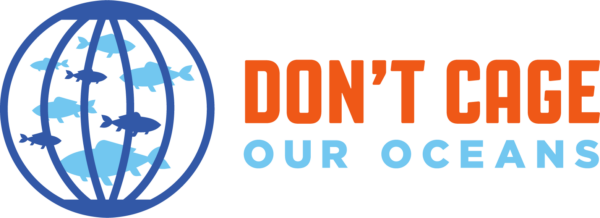AQUAA Act 101
The Advancing the Quality and Understanding of American Aquaculture ActThe AQUAA Act is a bill that would enable colossal factory fish farms to operate in open pens on the ocean. NAMA is part of a coalition working to halt this disastrous bill and replace it with a policy that bolsters local and regional seafood supply chains that include both wild and farmed seafood.
Share this Post
The Problem
In 2021, Sen. Wicker (R-MS) re-introduced the AQUAA Act, which stands for Advancing the Quality and Understanding of American Aquaculture Act.
The federal bill would award permits to large corporations to build industrial-sized offshore finfish farms in federal ocean waters. If the bill passes, the National Oceanic and Atmospheric Agency (NOAA), which has pushed private ownership of marine resources for years, would become the managing agency. The bill would also pave the way for farming of genetically engineered fish species at sea. A Trump-era executive order – which is still active – could fast-track permits for these farms before the bill even gets a vote.
Factory-style finfish farming is a textbook case of Big Aquaculture. It’s an outdated, under-regulated, and very dirty industrial method of raising fish that repeats the horrors of Big Agriculture. Yet, the AQUAA Act’s loudest advocates, including Cargill, Sysco, Pacific Seafoods, High Liner, and Fortune International, are attempting to frame the narrative around domestic jobs and food security. But we know the track record of companies like Cargill, one of the world’s biggest corporations and leader of the lobbying effort: They have no allegiance to domestic workers or food systems.
The reality is that offshore factory fish farming poses a real danger to public health, fishing communities, coastal economies, and the ocean.

There are no protections in the AQUAA Act for fisheries from the ecological damage we expect from these farms. In addition, farmed fish already floods seafood markets. If mammoth companies get access to swaths of ocean to grow more fish, it may be the final nail in the coffin for community-based fishermen who already are forced to answer to billion-dollar sea lords.
These farms are a breeding ground for pests and diseases lethal to native fish. We know these farms contaminate surrounding waters with toxic chemicals, untreated fish waste, and pharmaceutical drugs. For instance, seventy-five percent of antibiotics used in industrial offshore finfish farming are directly absorbed by the surrounding environment.
There’s also the threat of fish escapes. Storms, predators, and lack of upkeep can also cause net pens to fail in the open ocean, leading to huge fish escapes that threaten wild species. For instance, in 2020, nearly 50,000 non-native salmon escaped in Scotland after a storm destroyed some of the pens owned by the company Mowi.
The Solution
NAMA is a member of Don’t Cage Our Oceans (DCO2), a coalition campaign fighting to stop the ongoing threat of offshore factory fish farming in the U.S. We’re actively developing federal policy to prioritize local and regional seafood supply chains to ensure fish that’s caught in US waters stays closer to the regions where it was caught. We also support the Keep Fin Fish Free Act, which was reintroduced in 2021 by the late Congressman Don Young (R-Alaska). This bill would put a freeze on commercial permits for finfish farms in federally-controlled ocean waters.
There are better methods of aquaculture than factory fish farming. We don’t oppose farming seafood so long as it’s community-based and is committed to the triple bottom line of upholding social, economic, and environmental values. The operation should also use low-impact processes, such as land-based systems that reuse energy and water.
Other low-impact forms of aquaculture include small-scale shellfish and small- and mid-scale seaweed or kelp farming, which have the ability to filter and absorb waste. (They can even clean waste produced by several types of finfish.) Farming of shellfish and small- to mid-scale seaweed also has the potential to become a new, vibrant economy for coastal communities. In the United States, more coastal small business owners are investing in these systems as a way to expand farmed seafood production while keeping community control.
Finally, our network asks that the public buy from a local fisherman whenever possible

